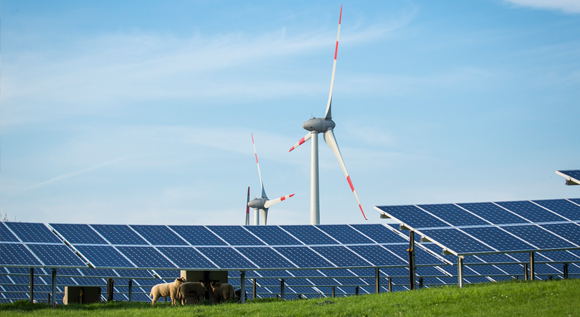Auction procedure for photovoltaics projects: first round successfully completed
Assistance rates determined in competition instead of fixed funding rates prescribed by the administration: funding for ground-mounted photovoltaic installations under the Renewable Energy Sources Act is currently being re-organised on the basis of this principle. The first pilot auction has now been successfully completed.
 © BMWi/ Holger Vonderlind
© BMWi/ Holger Vonderlind
New ground-mounted photovoltaic installations – that is to say all solar modules installed at ground level as opposed to on rooftops or façades – will in future qualify for funding under the Renewable Energy Sources Act (EEG) only after the operators have successfully taken part in an auction. In this competitive tendering procedure, the bidders that calculate with the lowest assistance rates get the funding. In short: those that ask for less win the deal.
In the pilot procedure the national regulatory authority, the Federal Network Agency (BNetzA), had put the first 150 megawatts of output from ground-mounted photovoltaic installations up for auction – this round ended in the middle of April. In all, 170 bids were received. As a result, the contract volume on offer was heavily over-subscribed. That is to say, there were many more bidders than could actually be awarded funding. As Rainer Baake, State Secretary in the Federal Ministry for Economic Affairs and Energy, said: "We have demonstrated that an auction procedure in the field of renewable energy can work. The high participation shows that the players accept this new instrument for ground-mounted photovoltaic installations and that the procedure harbours no major obstacles."
Actual funding below the pre-set ceiling
Funding was awarded from the lowest bids upward – until the entire nominal rating available had been assigned. That way, 25 bids offering a total of around 157 megawatts were successful. The average size of the projects that were awarded funding was 6.3 megawatts. The average level of funding awarded was at most 9.17 cents per kilowatt-hour. The highest tenderable bid level had been set in advance at 11.29 cents per kilowatt-hour. Thus the actual funding awarded is significantly below this ceiling.
The successful bidders now have to post a bond, otherwise the award is forfeited. If they fail to meet this obligation on a large scale, the Federal Network Agency could hold a move-up procedure. Bidders who were unsuccessful in the first pilot auction can take part in the next rounds: in the second round (the closing date for bids is 1 August 2015), another 150 megawatts will be put up for auction, and in the third round, for which bids will be accepted until 1 December 2015, another 200 megawatts.
Evaluation report to be submitted in late 2015
The Federal Network Agency, will closely examine and analyse the outcome of the pilot auction. On the basis of its findings, the Federal Ministry for Economic Affairs and Energy will submit an evaluation report to the German Parliament by the end of the year. In a second step, financial assistance for the other renewable energy technologies is likewise to be put on a competitive auction basis.

